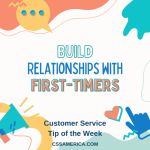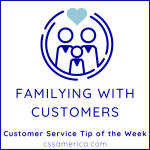
I want you to have an ego, just for a minute. I want you to brag on yourself, just for a few seconds. I want you to lose the humility, just for a little while.
Sometimes you’re dealing with a customer or co-worker that is conveying some emotions that are tough to deal with, and those emotions are not always anger and upset. Sometimes those emotions are anxiety and nervousness. They’re worried about what MIGHT happen. They are worried about what the ramifications COULD be. They’re worried about something in the future, something unknown to them.
When dealing with this emotion, sometimes it’s beneficial to talk about yourself or your organization.
After hearing the concern from the customer, restate it back to them, telling them the details you know about their situation. This way, they realize they’re not a number to you. This way, they realize that the facts and the uniqueness of their situation are important to you. This gives them a little sense of comfort that you care enough about them to know about them.
But the next step is actually about YOU. Remember, they have anxiety and fear due in part to some lack of confidence or comfort with what might happen in the future. If you can talk about yourself or your organization and let them know how you successfully navigated the waters that they are about to traverse, that can build their confidence.
“My name is Ed, and I am one of the senior representatives here at Widget World. I’ve helped many different customers go through a similar experience to what you’re dealing with, so I’m confident that we can help you.”
At this point you’ve shared enough about yourself so that they have a vision of success. You shared enough about your experience that they can picture themselves moving toward a solution. You shared enough about you that they realize that what is going on with them can be addressed successfully with your support.
When you’re dealing with the anxious or nervous customer, by building yourself up, you can build the customer’s confidence.
Signup for FREE Tips! Contact Us More Resources for You Visit Our Home Page























